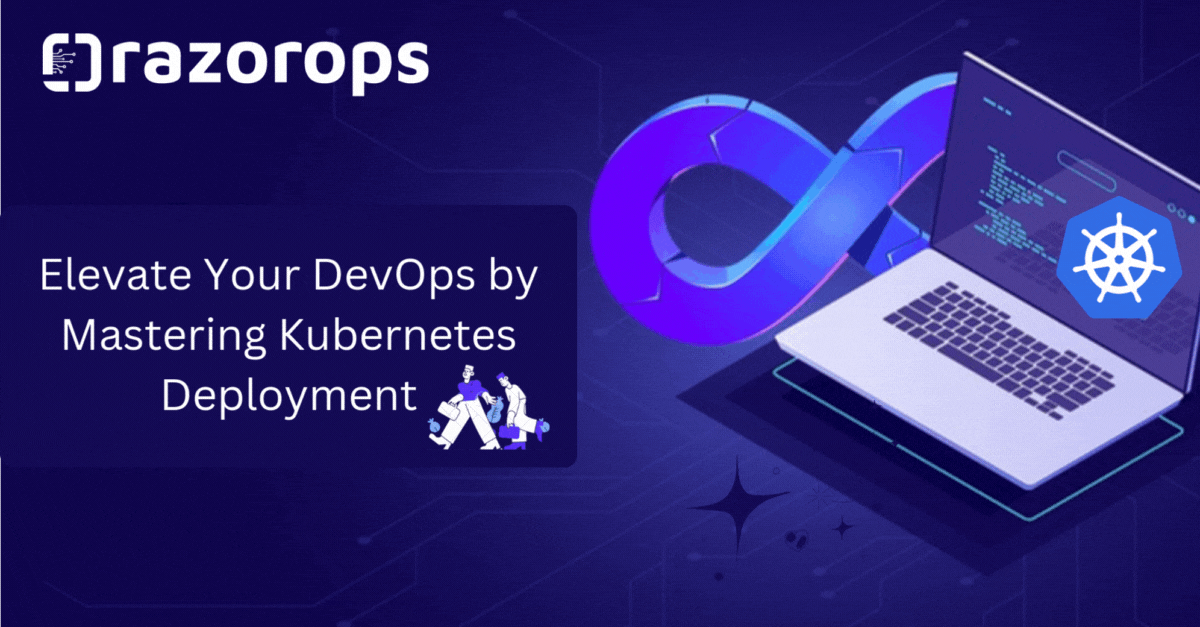
Elevate Your DevOps by Mastering Kubernetes Deployment
software development landscape, businesses are under constant pressure to deliver reliable and scalable applications quickly. DevOps practices have become integral to achieving these goals, and Kubernetes has emerged as a pivotal tool in the DevOps toolkit. Kubernetes, an open-source container orchestration platform, enables automated deployment, scaling, and management of containerized applications. Mastering Kubernetes deployment can significantly elevate your DevOps processes, ensuring your applications are resilient, scalable, and maintainable.
Why Kubernetes?
Before diving into deployment strategies, it’s essential to understand why Kubernetes is a game-changer for DevOps:
-
Scalability: Kubernetes automates the scaling of applications based on resource usage. This ensures that your application can handle varying loads seamlessly.
-
High Availability: By distributing your application across multiple nodes, Kubernetes ensures high availability and fault tolerance. If a node fails, Kubernetes automatically redistributes the workload.
-
Automated Rollouts and Rollbacks: Kubernetes facilitates smooth updates to your applications with minimal downtime through automated rollouts. In case of a failure, it can revert to the previous stable version.
-
Self-Healing: Kubernetes continuously monitors the health of your applications and can restart or replace containers that fail or become unresponsive.
Mastering Kubernetes Deployment
Mastering Kubernetes deployment involves understanding its architecture, configuration, and best practices. Here’s a guide to help you get started:
1. Understand Kubernetes Architecture
To deploy applications effectively, you need a solid understanding of Kubernetes architecture, which includes:
-
Nodes: These are the machines (physical or virtual) that run your applications.
-
Pods: The smallest deployable units in Kubernetes, encapsulating one or more containers.
-
Clusters: A set of nodes managed by a Kubernetes master.
-
Namespaces: Logical partitions within a Kubernetes cluster for managing resources.
2. Configure Your Cluster
Configuring your Kubernetes cluster correctly is crucial for smooth operations:
-
Cluster Setup: Use tools like kubeadm, kops, or managed services like GKE, EKS, or AKS to set up your cluster.
-
Resource Quotas: Define resource quotas to control resource consumption within namespaces, ensuring fair resource distribution.
-
Network Policies: Implement network policies to control traffic flow between pods, enhancing security.
3. Deployment Strategies
Different deployment strategies can be used based on your application’s needs:
-
Recreate: Shuts down old versions and starts new ones. This is simple but can cause downtime.
-
Rolling Update: Gradually replaces old versions with new ones, ensuring minimal downtime. Ideal for most scenarios.
-
Blue-Green Deployment: Runs two environments (blue and green) simultaneously. Once the new version (green) is verified, traffic is switched from the old version (blue) to the new one.
-
Canary Deployment: Gradually rolls out the new version to a subset of users, allowing for testing and validation before a full rollout.
4. Continuous Integration and Continuous Deployment (CI/CD)
Integrating Kubernetes with your CI/CD pipeline ensures seamless application delivery:
-
Pipeline Integration: Use CI/CD tools like Jenkins, GitLab CI, or Razorops to automate the build, test, and deployment processes.
-
Infrastructure as Code (IaC): Use tools like Terraform or Helm to define and manage your Kubernetes infrastructure.
5. Monitoring and Logging
Effective monitoring and logging are critical for maintaining application health and performance:
-
Monitoring: Use tools like Prometheus, Grafana, or Datadog to monitor your Kubernetes cluster and applications.
-
Logging: Implement centralised logging with tools like Elasticsearch, Fluentd, and Kibana (EFK stack) to collect and analyse logs.
6. Security Best Practices
Securing your Kubernetes deployment is paramount:
-
RBAC (Role-Based Access Control): Implement RBAC to control access to resources within your cluster.
-
Pod Security Policies: Define and enforce security policies for your pods.
-
Secrets Management: Use Kubernetes secrets to manage sensitive information securely.
Mastering Kubernetes deployment is a journey that can significantly enhance your DevOps practices. By understanding its architecture, configuring your cluster correctly, employing effective deployment strategies, integrating with CI/CD pipelines, and implementing robust monitoring and security practices, you can elevate your DevOps processes to new heights. Kubernetes not only helps in managing containerized applications efficiently but also ensures that your applications are resilient, scalable, and maintainable. Start your Kubernetes journey today and unlock the full potential of your DevOps efforts.
Tutorials & Guides
Top Reading Recommendations
Upcoming Events
Thursdays Virtual Meetup (EMEA timezone)
June 13, 8:00 – 9:00 PM (PST)
2024: Cloud Native Vancouver Kickoff 🇨🇦
June 14, 6:00 – 9:00 AM (PST)
Fridays Virtual Meetup (Edge Computing with Kubernetes by Sergio Méndez , US timezone)
June 14, 10 :30 PM (PST)
DevOps Jobs
Google - Check out all the jobs here
Accenture - Check out all the jobs here
Infosys - Check out all the jobs here
Microsoft - Check out all the jobs here
PS- We publish this newsletters every week, Subscribe and share with your friends. We hope this newsletter has provided valuable information. Follow RazorOps Linkedin Page Razorops, Inc. and give a FREE try to Our SaaS CICD product Sign up for RazorOps today and embark on a journey of automation, efficiency, and innovation. Your team and your projects deserve the best CICD product.
